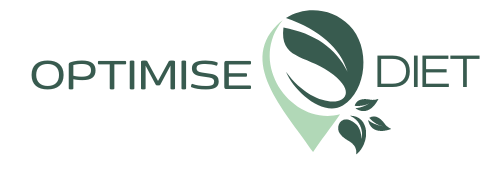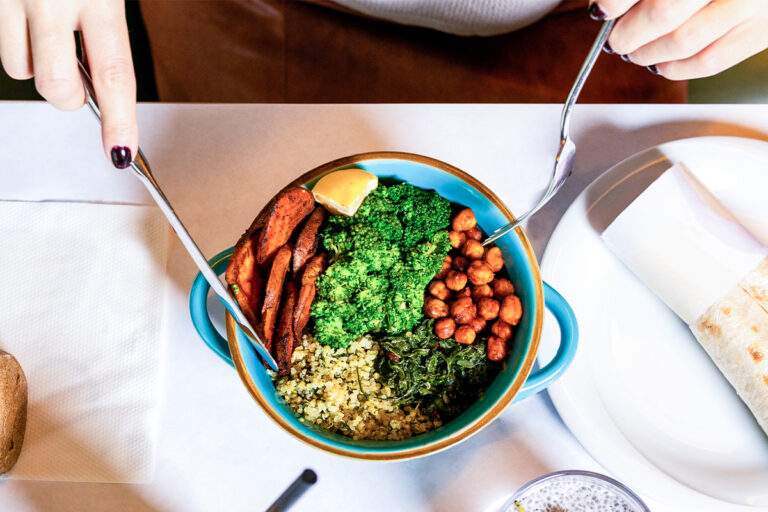Starting a new workout routine can feel overwhelming, especially when it comes to figuring out how to eat right. Trust me, I’ve been there. When I first began my journey with calisthenics, I quickly learned that nutrition plays a massive role in how you perform, recover, and ultimately progress.
You can train as hard as you want, but without the right fuel, you won’t see the results you’re after. I’ve made the mistakes of neglecting nutrition early on, and believe me, it’s something you want to get right from the start.
This guide aims to break down everything you need to know about creating a calisthenics diet.
There are the Essentials
- Determine Your Daily Caloric Needs
- Balance Macronutrients
- Meal Planning
- Hydration
- Consistency and Meal Prep
- Supplementation
1. Determine Your Daily Caloric Needs
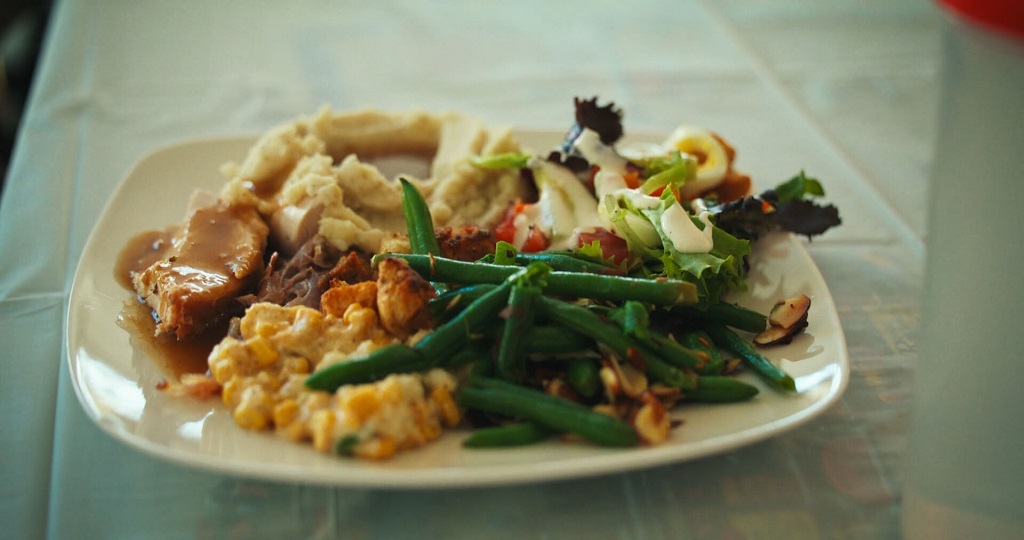
To get the most out of calisthenics, knowing how many calories your body actually needs each day is the first crucial step. And it’s not as simple as guessing!
First, you need to figure out your Basal Metabolic Rate (BMR), which measures how many calories your body burns at rest. You can use the Harris-Benedict equation to do this. Once you have your BMR, multiply it by your activity level to get your Total Daily Energy Expenditure (TDEE).
- For muscle gain, increase your daily intake by 200-500 calories. This gives your body extra fuel to build muscle.
- For fat loss, cut your daily intake by 200-500 calories, allowing your body to burn fat without sacrificing energy during workouts.
Be sure to read our guide on getting abs just with calisthenics.
Formula for Determining Caloric Needs
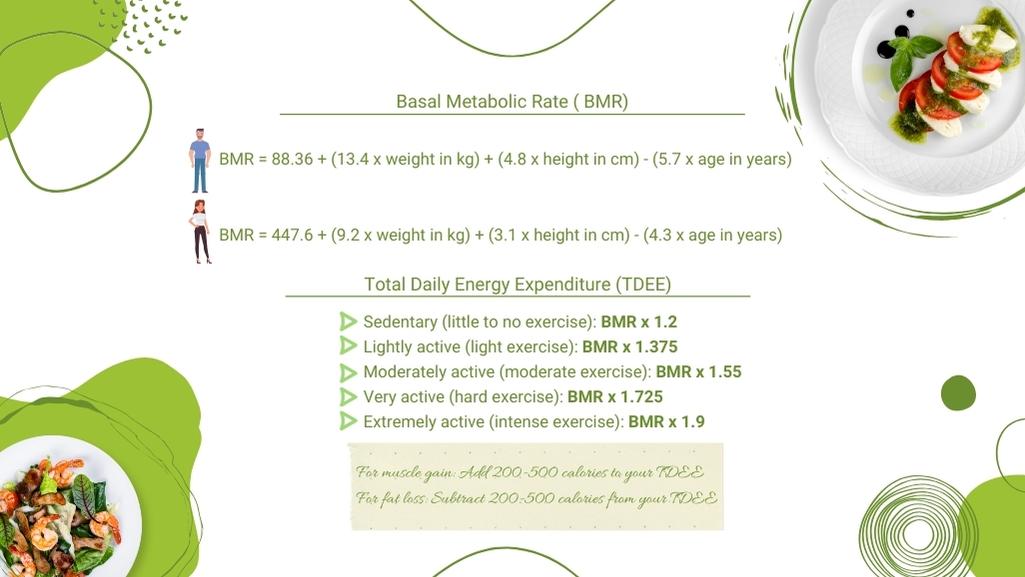
Calculate BMR (Basal Metabolic Rate)
- For men:
BMR = 88.36 + (13.4 x weight in kg) + (4.8 x height in cm) - (5.7 x age in years) - For women:
BMR = 447.6 + (9.2 x weight in kg) + (3.1 x height in cm) - (4.3 x age in years)
Calculate TDEE (Total Daily Energy Expenditure)
- Sedentary (little to no exercise):
BMR x 1.2 - Lightly active (light exercise):
BMR x 1.375 - Moderately active (moderate exercise):
BMR x 1.55 - Very active (hard exercise):
BMR x 1.725 - Extremely active (intense exercise):
BMR x 1.9
Adjust for Goals
- For muscle gain: Add 200-500 calories to your TDEE.
- For fat loss: Subtract 200-500 calories from your TDEE.
Experts recommend going for a 70% clean, 30% dirty approach for those struggling with gaining weight.
Consider Body Type
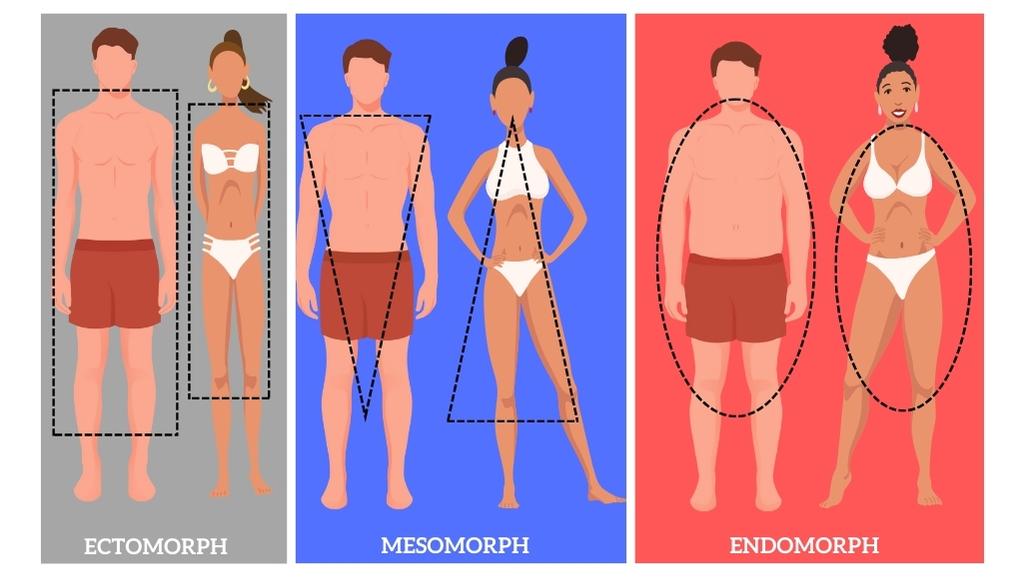
- Ectomorph (naturally slim): May need more calories for muscle gain.
- Mesomorph (muscular build): Balanced approach.
- Endomorph (naturally heavier): Careful with calorie increases to avoid fat gain.
2. Balance Macronutrients
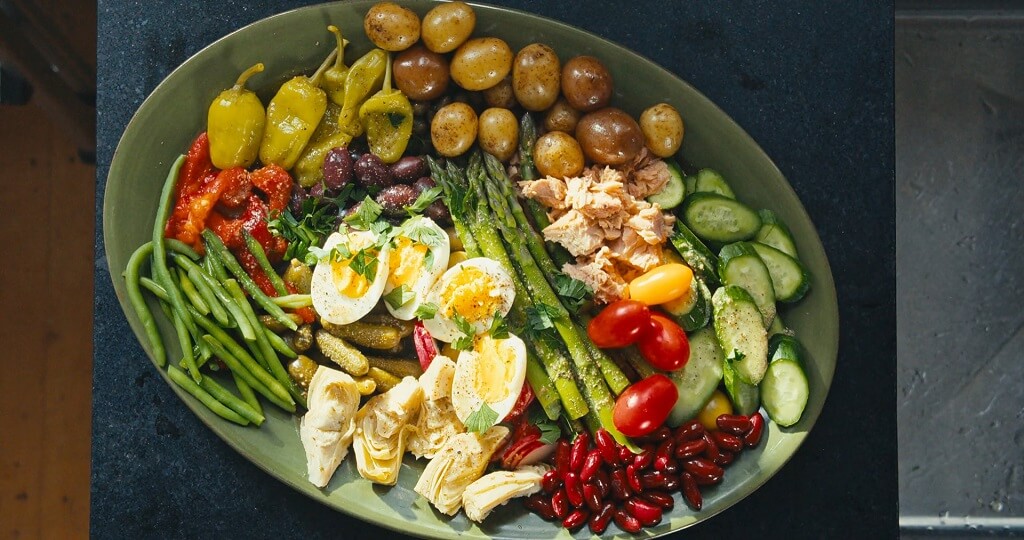
After determining your caloric needs, the next crucial step in a calisthenics diet is to focus on balancing macronutrients: protein, carbohydrates, and fats.
Protein
For muscle building, aim for 1.6 to 2.2 grams of protein per kilogram of body weight. Protein supports muscle repair and growth, which is essential for calisthenics training.
- Example: If you weigh 70 kg, you should consume between 112g to 154g of protein daily.
Carbohydrates
Carbohydrates fuel your workouts, so they should make up 40-60% of your daily intake. Complex carbs like whole grains, vegetables, and fruits provide long-lasting energy.
- Example: If your total calorie intake is 2500, and you allocate 50% to carbs, you’d consume 312g of carbs (each gram provides 4 calories).
Fats
Healthy fats should account for 20-30% of your total caloric intake. These support hormone production and overall health.
- Example: For a 2500-calorie diet, fats should make up 500-750 calories, which equals 55-83g (each gram provides 9 calories).
Experts often recommend prioritizing whole, minimally processed foods in a calisthenics diet. A balanced diet of 30% protein, 40% carbs, and 30% fats is a common structure recommended by professionals. It is known as a Zone Diet.
3. Meal Planning
Once you’ve determined your calorie and macronutrient needs, it’s time to put them into action with proper meal planning.
Create Balanced Meals
- Protein: Include a lean protein source (chicken, fish, tofu) in each meal. Protein is critical for muscle recovery and growth.
- Carbohydrates: Add complex carbohydrates like whole grains, sweet potatoes, or quinoa. These carbs will give you steady energy throughout the day.
- Fats: Include healthy fats, such as olive oil, avocado, or nuts, to support hormone production and long-term energy.
Portion Guidelines
- Fill half of your plate with vegetables and fruits.
- Allocate one-quarter of your plate to lean proteins.
- The remaining quarter should contain complex carbs.
Pre- and Post-Workout Nutrition

- Pre-Workout: Focus on easily digestible carbs (like fruits) combined with a small amount of protein for quick energy.
- Post-Workout: Consume a mix of protein and carbs to aid muscle recovery and replenish glycogen stores. A smoothie with protein powder and a banana works great.
Snacking
Plan healthy snacks throughout the day to prevent energy dips. Options like Greek yogurt, mixed nuts, or fruit with nut butter keep you satisfied.
According to CircleDNA, consuming a balanced meal or snack 1-2 hours before calisthenics can significantly improve workout performance.
4. Hydration
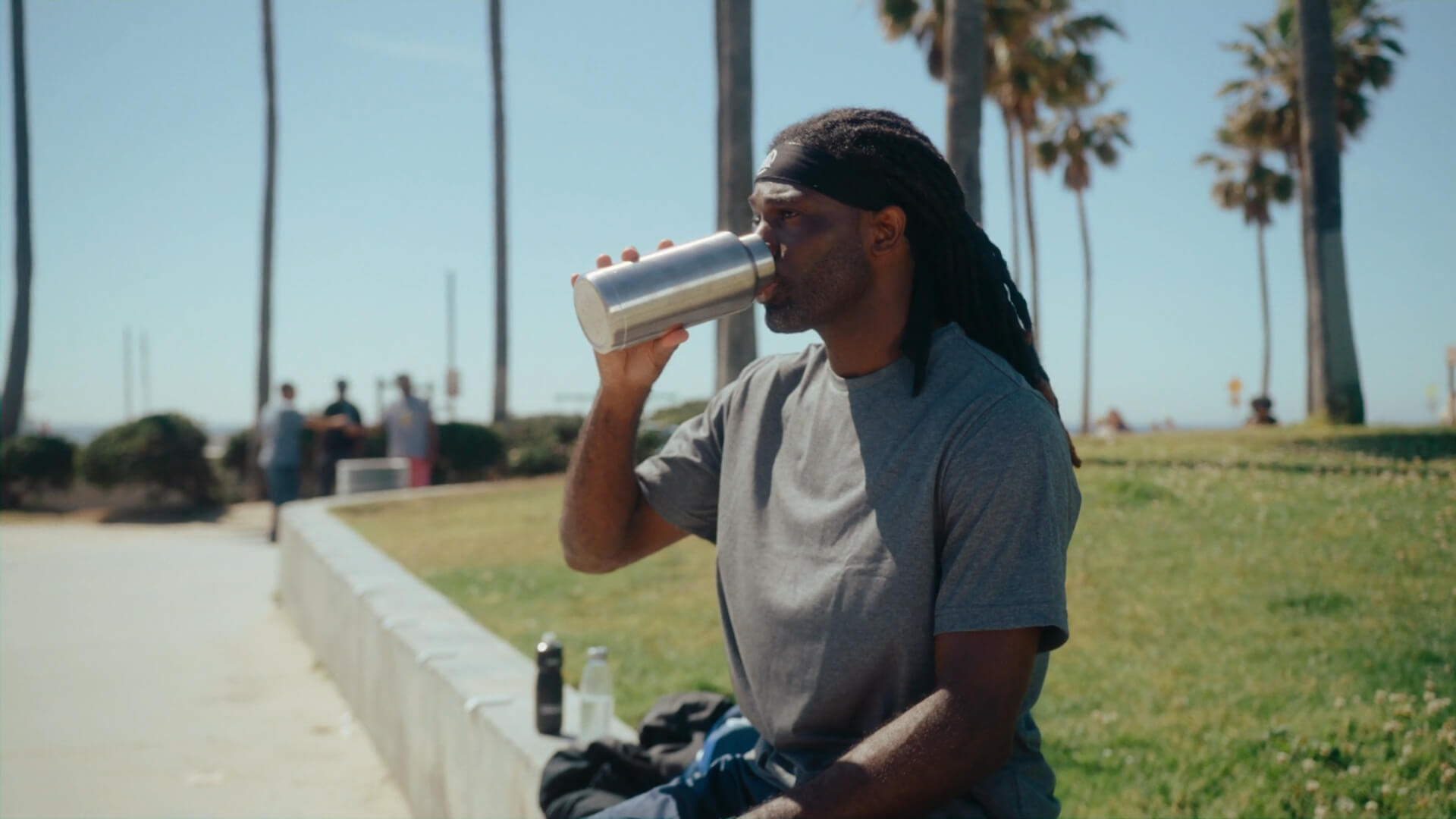
Proper hydration is often overlooked, but it plays a critical role in your performance and recovery when training in calisthenics.
Daily Water Intake
Aim for about 3 liters (13 cups) per day for men and 2.2 liters (9 cups) for women as a general guideline. This amount should be increased based on activity level, workout intensity, and the climate you’re in.
Pre- and Post-Workout Hydration
- Pre-Workout: Drink 500-600 ml (17-20 oz) of water about 2-3 hours before exercising. This will ensure you’re properly hydrated heading into your workout.
- Post-Workout: After exercising, replenish lost fluids by drinking 16-24 oz (about 500-700 ml) of water for every pound of body weight lost during your session.
During Workout
Drink 150-200 ml (5-7 oz) of water every 10-20 minutes during exercise to stay hydrated, especially if the workout is intense or lasts longer than 60 minutes.
Some well-known people from the fitness world are also suing calisthenics along with other types of workout, like Ryan Humiston. You can check his workout routine here.
Electrolytes
If you’re sweating heavily or training intensely, consider electrolyte-rich drinks to replenish sodium, potassium, and magnesium. This can help prevent cramping and dehydration during longer sessions.
5. Consistency and Meal Prep
Success in any diet, including a calisthenics-focused one, relies heavily on consistency. A well-planned meal prep strategy ensures that you stick to your nutritional goals, saves time, and keeps you from making impulsive decisions that could derail your progress.
Plan Your Meals in Advance

Dedicate one day a week to plan and prepare meals for the next several days.
Ensure each meal is balanced with the right proportion of protein, carbohydrates, and healthy fats. For example, prep lean proteins like chicken, tofu, or fish, pair them with complex carbs such as brown rice or sweet potatoes and include vegetables for nutrients.
Prepare in Batches
Cook large quantities of food in one go. Divide meals into individual portions and store them in containers for easy grab-and-go options during the week.
Prepping snacks like mixed nuts, fruit, and yogurt ensures you always have something healthy to reach for when hunger strikes.
Also, read more about the Navy SEAL Diet.
Stick to Whole Foods
Focus on whole, minimally processed foods to maximize nutrient intake and maintain steady energy levels throughout the day.
Avoid relying on processed meals or snacks that may be convenient but lack the essential nutrients needed for muscle growth and recovery.
“Whole foods such as fruits, vegetables, legumes, and grains…provide the body with a wide range of nutrients it needs to function correctly.” as stated by Health Xchange.
6. Supplementation
While a whole food-based diet is key for success in calisthenics, supplementation can play a helpful role in filling nutrient gaps, supporting muscle recovery, and boosting performance.
Protein Powder

If it’s hard to meet your daily protein requirements through food alone, adding a high-quality protein powder (whey, casein, or plant-based) can help support muscle repair and growth.
Aim for a post-workout shake containing 20-30 grams of protein to kick-start muscle recovery.
In the study by Schoenfeld and Aragon, it is noted that approximately 20-25 grams of high-quality protein maximizes muscle protein synthesis in young adults. Consuming more than this may lead to increased amino acid oxidation, but some of the extra protein still supports muscle tissue development. To optimize muscle building, they suggest aiming for 0.4 g/kg of protein per meal, spread over at least four meals throughout the day to reach a minimum daily intake of 1.6 g/kg.
Creatine
Creatine monohydrate is one of the most researched supplements, shown to improve strength, endurance, and muscle gains. Taking 3-5 grams daily can enhance performance in high-intensity exercises like calisthenics.
Omega-3 Fatty Acids
Omega-3 supplements, such as fish oil, support joint health, reduce inflammation, and improve recovery. A daily dose of 1-3 grams is typically recommended.
Vitamins and Minerals
Vitamin D and Magnesium are crucial for energy production, muscle function, and overall health. If you live in areas with limited sunlight or have deficiencies, consider adding these to your routine.
Last Words
How do I calculate macros for weight loss in a calisthenics diet?
First, determine your Total Daily Energy Expenditure (TDEE) and subtract 200-500 calories to create a calorie deficit. Then allocate macros by using a typical ratio like 40% carbs, 30% protein, and 30% fats.
What are good protein sources for vegetarians in a calisthenics diet?
Great plant-based protein sources include lentils, chickpeas, quinoa, tofu, and plant-based protein powders. Aim for a balance of different sources to get a full amino acid profile.
How much protein should I eat if I weigh 80 kg?
If you’re aiming for muscle gain, you should consume between 1.6 to 2.2 grams of protein per kilogram of body weight. For 80 kg, this translates to 128-176 grams of protein daily.
Should I avoid fats when following a calisthenics diet?
No, healthy fats are essential. Fats support hormone production, energy levels, and overall health. Include fats like avocados, olive oil, and nuts in your diet.
Can I eat carbs at night on a calisthenics diet?
Yes, consuming carbs at night won’t harm your progress. Carbs help replenish glycogen stores, which is useful for recovery and energy.
What’s the best way to avoid bloating during calisthenics training?
To prevent bloating, avoid large meals right before your workout. Instead, opt for small, balanced meals 1-2 hours prior, with easily digestible carbs and some protein.
The Bottom Line
To wrap it up, building a calisthenics diet doesn’t have to be complicated. Start with calculating your caloric needs, balance your macros, and prioritize whole foods. Consistency is key, and hydration is just as important as your meal plan.
Supplements can help fill any gaps, but real food should be your focus. Stick to these basics, and you’ll see the results you want. Keep it simple, stay disciplined, and let your nutrition support your hard work in training.
